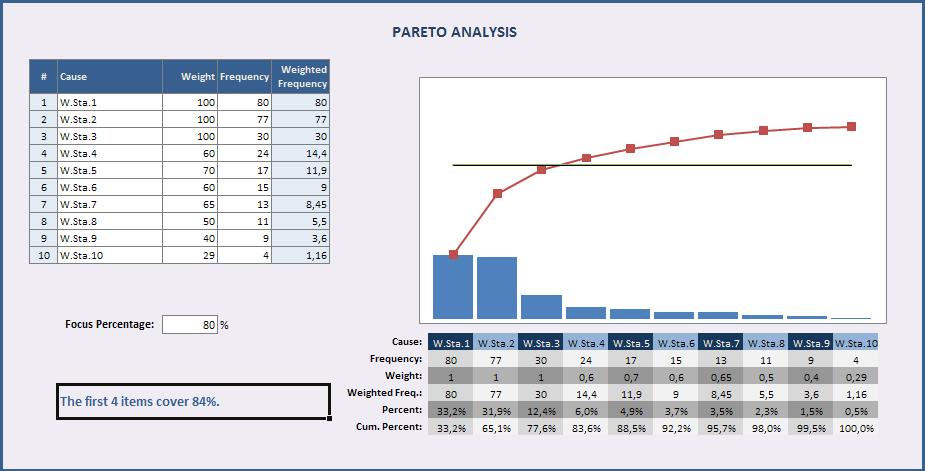The Pareto principle, most commonly known as the 80-20 rule, is known by business owners as the simple fact that 80% of your problems are caused by 20% of the people. Really the theory was about wealth and power distribution, but the general premise applies. Most of your issues can be attributed to a fairly small distribution of root causes.
What does it look like?

What does it do?
A Pareto Charts work in levels to help you identify the root cause of the tallest bar (the biggest issue).
How do I use it?
The trick with Pareto is to start high and whittle away. What does that mean? It means that when you find out department A is supplying department b with all of the material that ends up in their rework, don’t go to department b and shut everything down. I know that it seems counterintuitive, but jumping the gun before you find out why that material ends up in the rework pile, leads to rework on department a’s part, causing more defects.
What doesn’t it do?
Pareto doesn’t provide an instant Ah-ha moment, it’s a method that requires patience and adherence to the process to be effective. If you need the answer now, it may not be the method for you. You may be better suited to process mapping or the 5 Why’s which will point you in a direction immediately. I have to say however, if you want the right answer validated by numbers then Pareto is right for you.
In 6Sigma the devil is in the details and a successful improvement initiative depends heavily on the selection of the right tool for the engagement. A successful selection depends heavily on the knowledge and skill of your belt, so use that library of knowledge and if that belt isn’t asking you a thousand questions about your end goal-move on!

